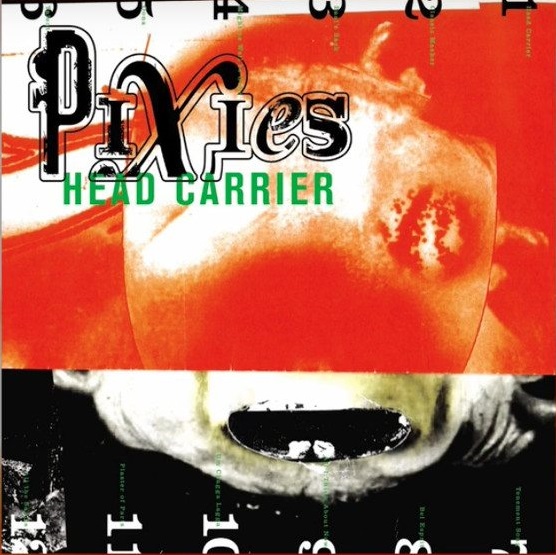When they ran into each other at a party a few years later they agreed to start a band. For their first rehearsal they were joined by Conner’s friend Mark Pickerel and the trio started off with Lanegan on drums and Pickerel singing. It didn’t go well until Pickerel took to the drum kit and Lanegan stepped forward to the microphone to perform The End by The Doors. As soon as Pickerel heard Lanegan’s distinctive, smoky voice he realised that they’d ‘stumbled ass-backwards into something good’.
The complicating factor in this early incarnation of the band was that rehearsals were taking place in the bedroom of Van Conner’s reclusive older brother, Gary Lee. Van and Gary Lee had been in bands together before and the two had always fought violently. For that reason the younger brother had intended to keep his older sibling out of this group, but relented under pressure from their mother and from Lanegan, who recognised that Gary Lee, as guitarist and songwriter, was ‘the one with the talent’.
The band created a proper practice space in the back room of the Conner family’s video store, used it, got good and got signed to the ultimate US punk label, SST. The band were thrilled to be on the label that had released Bad Brains, Black Flag, Minutemen, Meat Puppets and Sonic Youth. Gary Lee called it ‘the coolest and most amazing thing that happened in our entire career’.

Some major labels had also sniffed around at that time, but had found the band too physically unattractive to sign. But four SST albums later, the growing popularity of the Trees’ hard-edged, melodic, psychedelia brought the majors back into the picture – this being 1990, it didn’t hurt that they were from the vicinity of Seattle either – and, following in Soundgarden’s footsteps, they signed for Epic.
The band released three major label albums and achieved a good level of popularity without ever catching the same wave as Soundgarden, Nirvana, Alice In Chains et al. They did however score a fair-sized hit when their uplifting single Nearly Lost You was featured on the soundtrack to the godawful ‘grunge film’ Singles. They also gained a reputation for their drink and drug fuelled violent escapades whilst on tour, with Lanegan’s behaviour especially notorious. Dave Grohl has said of the singer, ‘you don’t wanna mess with that dude. Give him a microphone, let him sing, then get the fuck out of his way’.
The Screaming Trees’ 1992 appearance on Letterman comes close to encapsulating their entire career – playing their biggest hit, looking out of place on a mainstream TV show, the Conner brothers hidden away at the back of the set and Lanegan with a black eye from their latest brawl. They had a stand-in drummer for the performance too, because Barrett Martin (who’d taken over from Mark Pickerel the previous year) had dislocated his shoulder in the same incident.
The band released their last album Dust in 1996 and split for good in 2000. All the band’s members continue to work on various projects, most notably Mark Lanegan, whose gruffly unique voice ensures that when he’s not working solo he’s always in demand for a collaboration, with Queens Of The Stone Age, Unkle, Massive Attack, Moby and many, MANY others. There’s often talk of a reunion, but Lanegan usually quashes these rumours, preferring to keep the past in the past and referring to his time with the band as his ‘apprenticeship’.
The Screaming Trees’ cover of Love Or Confusion was the first thing I heard by the band. It was on one of the first CDs I ever bought, the classic compilation Sub Pop 200, which also features Soundgarden, Nirvana, Tad, Mudhoney and Green River. Sub Pop founders Jonathan Poneman and Bruce Pavitt, in one of their signature flamboyant marketing moves, released this as a lavish three-record box set in 1988 with the idea of presenting the label’s hometown of Seattle as having a distinct and thriving alternative rock scene. It worked.
By the time the CD came to my local Our Price Records around 1990 the vinyl boxsets were long since sold out and Mudhoney, Nirvana and Soundgarden, were advancing the Seattle sound far further than even Sub Pop’s megalomaniacal founders could have dreamed. It’s also a fantastic compilation of music, a snapshot of a scene that was about to explode and a seminal grunge album.
My original Our Price copy of Sub Pop 200 was in the possession of a friend of mine at the time he hung himself from a tree in 1996. I replaced it pretty soon after Amazon made that sort of thing piss-easy at the turn of the century. I still play the new version pretty regularly and though it’s housed in an unsatisfactory blank cardboard box with a flimsy booklet rather than in a proper, robust case like my first copy, I’m still glad I didn’t try and talk to me friend’s parents about getting in back. The tree is still there and I blow a kiss in its direction every time I pass it.

‘Gimme Shelter’ by The Rolling Stones covered by Patti Smith – Magnificent Cover Version Number 26


